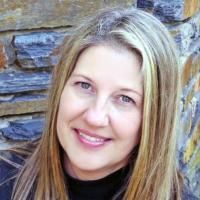Inheritance of the CENP-A chromatin domain is spatially and temporally constrained at human centromeres.
Date
2016
Journal Title
Journal ISSN
Volume Title
Repository Usage Stats
views
downloads
Citation Stats
Abstract
BACKGROUND: Chromatin containing the histone variant CENP-A (CEN chromatin) exists as an essential domain at every centromere and heritably marks the location of kinetochore assembly. The size of the CEN chromatin domain on alpha satellite DNA in humans has been shown to vary according to underlying array size. However, the average amount of CENP-A reported at human centromeres is largely consistent, implying the genomic extent of CENP-A chromatin domains more likely reflects variations in the number of CENP-A subdomains and/or the density of CENP-A nucleosomes within individual subdomains. Defining the organizational and spatial properties of CEN chromatin would provide insight into centromere inheritance via CENP-A loading in G1 and the dynamics of its distribution between mother and daughter strands during replication. RESULTS: Using a multi-color protein strategy to detect distinct pools of CENP-A over several cell cycles, we show that nascent CENP-A is equally distributed to sister centromeres. CENP-A distribution is independent of previous or subsequent cell cycles in that centromeres showing disproportionately distributed CENP-A in one cycle can equally divide CENP-A nucleosomes in the next cycle. Furthermore, we show using extended chromatin fibers that maintenance of the CENP-A chromatin domain is achieved by a cycle-specific oscillating pattern of new CENP-A nucleosomes next to existing CENP-A nucleosomes over multiple cell cycles. Finally, we demonstrate that the size of the CENP-A domain does not change throughout the cell cycle and is spatially fixed to a similar location within a given alpha satellite DNA array. CONCLUSIONS: We demonstrate that most human chromosomes share similar patterns of CENP-A loading and distribution and that centromere inheritance is achieved through specific placement of new CENP-A near existing CENP-A as assembly occurs each cell cycle. The loading pattern fixes the location and size of the CENP-A domain on individual chromosomes. These results suggest that spatial and temporal dynamics of CENP-A are important for maintaining centromere identity and genome stability.
Type
Department
Description
Provenance
Subjects
Citation
Permalink
Published Version (Please cite this version)
Publication Info
Ross, Justyne E, Kaitlin Stimpson Woodlief and Beth A Sullivan (2016). Inheritance of the CENP-A chromatin domain is spatially and temporally constrained at human centromeres. Epigenetics Chromatin, 9. p. 20. 10.1186/s13072-016-0071-7 Retrieved from https://hdl.handle.net/10161/12389.
This is constructed from limited available data and may be imprecise. To cite this article, please review & use the official citation provided by the journal.
Collections
Scholars@Duke

Beth Ann Sullivan
Research in the Sullivan Lab is focused on chromosome organization, with a specific emphasis on the genomics and epigenetics of the chromosomal locus called the centromere. The centromere is a specialized chromosomal site involved in chromosome architecture and movement, and when defective, is linked to cancer, birth defects, and infertility. The lab has described a unique type of chromatin (CEN chromatin) that forms exclusively at the centromere by replacement of core histone H3 by the centromeric histone variant CENP-A. Their studies also explore the composition of CEN chromatin and its relationship to the underlying highly repetitive alpha satellite DNA at the centromere. The Sullivan lab also discovered that genomic variation within alpha satellite DNA affects where the centromere is built and how well it functions. The Sullivan lab was part of the Telomere-to-Telomere T2T Consortium that used ultra long read sequencing and optical mapping to completely assemble each human chromosome, including through millions of basepairs of alpha satellite DNA at each centromere. Dr. Sullivan's group also builds human artificial chromosomes (HACs), using them as tools to test components required for a viable, transmissible chromosome and to study centromeric transcription and chromosome stability. The lab also studies formation and fate of chromosome abnormalities associated with birth defects, reproductive abnormalities, and cancer. Specifically, they study chromosomal abnormalities with two centromeres, called dicentric chromosomes. Originally described by Nobelist Barbara McClintock in the 1930s, dicentrics in most organisms are considered inherently unstable chromosomes because they trigger genome instability. However, dicentric chromosomes in humans are very stable and are often transmitted through multiple generations of a family. Using several approaches to experimentally reproduce dicentric chromosomes in human cells, the lab explores mechanisms of dicentric formation and their long-term fate.
Unless otherwise indicated, scholarly articles published by Duke faculty members are made available here with a CC-BY-NC (Creative Commons Attribution Non-Commercial) license, as enabled by the Duke Open Access Policy. If you wish to use the materials in ways not already permitted under CC-BY-NC, please consult the copyright owner. Other materials are made available here through the author’s grant of a non-exclusive license to make their work openly accessible.
